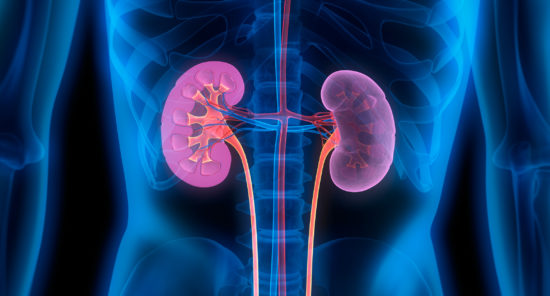Patients with diabetes mellitus commonly develop micro- and macrovascular complications that include chronic kidney disease (CKD) and cardiovascular events. Patients with those complications are often managed with renin-angiotensin-aldosterone-system (RAAS) inhibitors. However, use of those agents in this patient population may increase the risk of hyperkalemia, a serious and potentially fatal electrolyte imbalance.
Philip McEwan, PhD, and colleagues conducted a study to assess the risk of hyperkalemia and all-cause mortality among patients with type 1 or 2 diabetes mellitus and relevant complications. Results of the study were reported during a virtual poster session at ASN Kidney Week 2020 in a poster titled Hyperkalemia Risk and Mortality in Patients with Diabetes.
The study cohort included patients with type 1 or 2 diabetes ≥18 years of age who were identified from linked primary care data from the UK Clinical Practice Research Datalink and secondary care data from Hospital Episode Statistics. The relevant complications/comorbidities included were CKD and a history of major adverse cardiovascular events (MACE), comprising arrhythmia, heart failure, myocardial infarction, and stroke, and were identified through READ codes recorded during the study period (2008-June 2018) or the 5-year look back period (2003-2007).
The index date was January 1, 2008, or the initial diagnosis of diabetes mellitus, whichever was later. Following adjustment for age and sex, the researchers estimated the event rates of hyperkalemia (serum potassium ≥5.0 mmol/L and ≥6 mmol/L) and all-cause mortality over the follow-up period, defined as from the index date to the first of death, loss to follow-up, or the end of the study. Patients who accumulated complications/comorbidities over time were reclassified.
Among a total of 288,871 patients with diabetes mellitus, mean follow-up was 5.87 years. For diabetes mellitus, available follow-up per 1000 patient-years was 1038; for diabetes plus CKD, it was 149; for diabetes plus MACE, 129; and 89 for diabetes plus CKD plus MACE. The incidence of all-cause mortality increased consistently with increasing comorbidity burden, to 146.73 per 1000 person-years in the cohort with diabetes plus CKD plus MACE.
Among patients at the serum potassium threshold of ≥5.0 mmol/L, the incidence of hyperkalemia was highest in patients with diabetes plus CKD (779.27/635.26 per 1000 patient-years with/without MACE, respectively) and lower in patients without CKD (384.13/246.83 per 1000 patient-years with/without MACE, respectively). At the thresholds of ≥5.5 mmol/L and ≥6.0 mmol/L, the same between-cohort pattern was seen. There was also an association between CKD and /or MACE and higher levels of RAAS inhibitor prescription (61.91% vs 74.86%-76.28%).
In conclusion, the researchers said, “Diabetes mellitus patients with CKD and/or MACE are at increased risk of hyperkalemia and all-cause mortality. Routine monitoring of serum potassium level and prompt management of hyperkalemia episodes could improve clinical outcomes in diabetes mellitus patients, particularly those with CKD and/or a history of MACE.”
Source: McEwan P, Hurst MA, Hoskin L, et al. Hyperkalemia risk and mortality in patients with diabetes. Abstract of a poster presented at the American Society of Nephrology virtual Kidney Week 2020 (PO0968), October 22, 2020. Funding for this poster was provided by AstraZeneca.
Credit: Original article published here.









